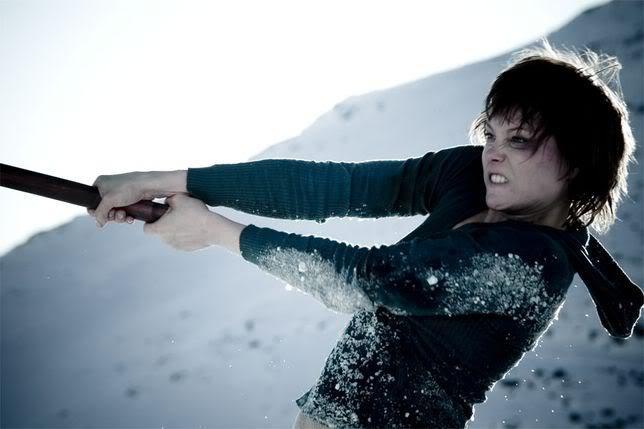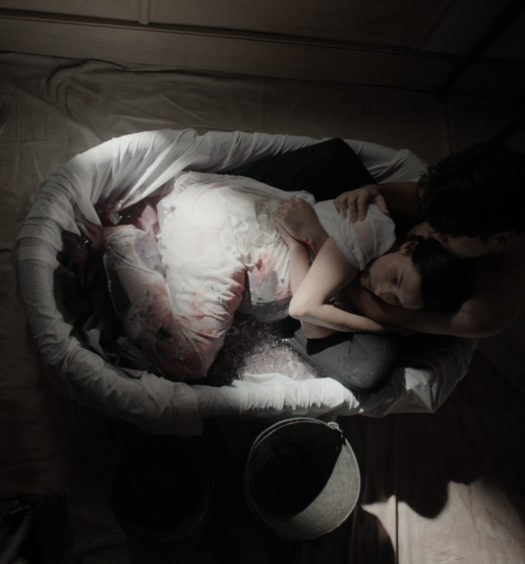Women in Horror Month: The Modern Final Girl
With the final day of Women in Horror Month upon us, it seems only fitting that we celebrate a well loved trope in horror; the Final Girl. The term was initially coined in 1992 by Carol J. Clover, an academic who changed the way we viewed gender in horror films with her book Men, Women, and Chainsaws: Gender in the Modern Horror Film. Her investigation of gender roles across multiple sub-genres of horror lead to brilliant insights of the genre formula, but the scope of films included in her study has grown a bit outdated.
While her deductions on the Final Girl may have been spot on at the time, the genre has long since evolved. With the golden age of slashers ending around 1984, the tried and true slasher formula has had to adjust to modern audiences, now more aware and intelligent than ever. Not just slashers, but all sub-genres have evolved. Where we were once able to pick out the survivors based on classic, wholesome personality traits, the modern horror’s characters have become just a bit more morally ambiguous. In short; they’ve become more realistically rendered and human.
Our modern final girl is no longer the sweet innocent that manages to survive her oppressor, either by overpowering him or getting away. Now she has to overcome her puritanical oppression in addition to the looming threat of evil in the woods. She has to fight tooth and nail to survive against vicious cave dwellers while simultaneously battling her inner demons after suffering great personal loss. Demonic possession is too easy for the modern final girl, let’s throw in a heroin addiction too.
There’s still an overwhelming amount of love for Nancy Thompson, Sally Hardesty, Laurie Strode, and all of the pioneering Final Girls who taught us how fierce women could be if you pushed them far enough. Yet, the modern women of horror are proving to be even tougher. Here are some of the best modern final girls.

Neil Marshall’s modern classic is a rare one that features an all female ensemble. Each one of these women are physically fit, capable badasses ready to spelunk their way through adventure. They just didn’t account for the bloodthirsty, cave dwelling beasts that dwell within.
Once shit hits the metaphorical fan, it’s not Sarah that comes across as the final girl, with her fragile state of mind over her lingering depression, but Juno. Not only does Juno instantly kick into fighting mode, but her need for redemption puts her prime position to outlast them all. She instead gets a pickaxe to the knee, when Sarah pulls it together and unleashes an inner ferocity to rival any cave creature. It’s also Sarah that proves to be the much more complicated character of the two, her journey bringing her to full, tragic circle.

If we’re going by Clover’s rules for slashers and final girls, than Jay’s gender neutral name instantly earns her Final Girl status as well as her blond hair color. Jay, played by Maika Monroe, also behaves a bit like a traditional Final Girl, choosing passivity and fear for much of the film before finally being pushed into action.
Yet, she opens the film with a Final Girl no-no; casual sex with someone she just met. Unlike slashers of old, we never spend time from the killer’s gaze, nor does it take any specific gender role. Why is this relevant to Jay’s final girl status? Because we spend the entire film through her sometimes naive, always complex perspective. By the end, we admire that she refuses to pass on this silent killer to another; instead choosing to spend her days looking over her shoulder and keeping the killer at bay. Jay may not have the overt qualities that one typically associates with the trope, but she subverts expectations with her quiet inner strength and resolve.

Jane Levy’s Mia defies the very definition of Clover’s Final Girl. The film introduces her as a very flawed individual corrupted by a heroin addiction that has flatlined her once prior to the events of the story. When Mia is the first to tell her friends that something is very wrong with their setting, their lack of trust in her proves both understandable and fatal.
Though becoming the first to succumb to demonic possession, and spending most of the movie as such, Mia overcomes her inner demons to save the day. Granted, she’s the only one to survive, but she’s also the only one to have to take on the Abomination. She grows from loser to badass, ripping her own arm off in her determination to survive. A violent metaphor for the hell of drug addiction, Mia overcame and earned her Final Girl status.

Ingrid Bolsø Berdal’s heroine, Jannicke, draws a parallel journey to one of the most famous Final Girls ever, Halloween’s Laurie Strode. Not only is she the sole survivor in Cold Prey’s massacre, but the sequel also takes place in a hospital.
Though Jannicke is the most traditional final girl on this list, she’s also the most overlooked. Her story might mirror Strode’s, but her resourceful toughness is more often compared to Ellen Ripley. Unlike most of her kind, she’s not afraid to get close enough to her attacker to engage in a fight. She’s also going to make damned sure the killer is dead.

Though she can be first glimpsed in a crowd during the Ain’t Rights set, their first real introduction to Imogen Poots’ Amber comes when Anton Yelchin’s Pat walks in on a death he wasn’t meant to see. While Amber’s an emotional wreck over the loss of her best friend, she quickly pulls it together as the only one with a true understanding of just how dire the situation has become.
As the bodies begin to pile up in one of the most tense films in recent memory, it becomes clear that Amber is the true MVP of the film. Resourceful, ruthless, and intelligent, Anton Yelchin’s Pat couldn’t have made it without her. Amber’s survival instincts and desire for revenge instantly aligns her with our protagonists, but her background also makes her just as untrustworthy. A rare final girl who is also an anti-hero; the lone wolf with an attitude you can’t help but love.

Part screwball comedy, part violent home invasion horror, You’re Next features one of the most iconic modern Final Girls in Sharni Vinson’s Erin. Erin’s sweet persona instantly draws you in as the Final Girl type, yet crushes expectations the moment audiences realize that she easily outmatches the film’s villains. The villains become the victims, as Erin picks them off one by one with her spectacular survival skills.
Smart and kind, Erin embodies the Final Girl trope. She just also happens share a lot in common with a horror film killer as well, particularly in the eyes of the unsuspecting cops who show up at the end.
Who is your favorite modern Final Girl?





























